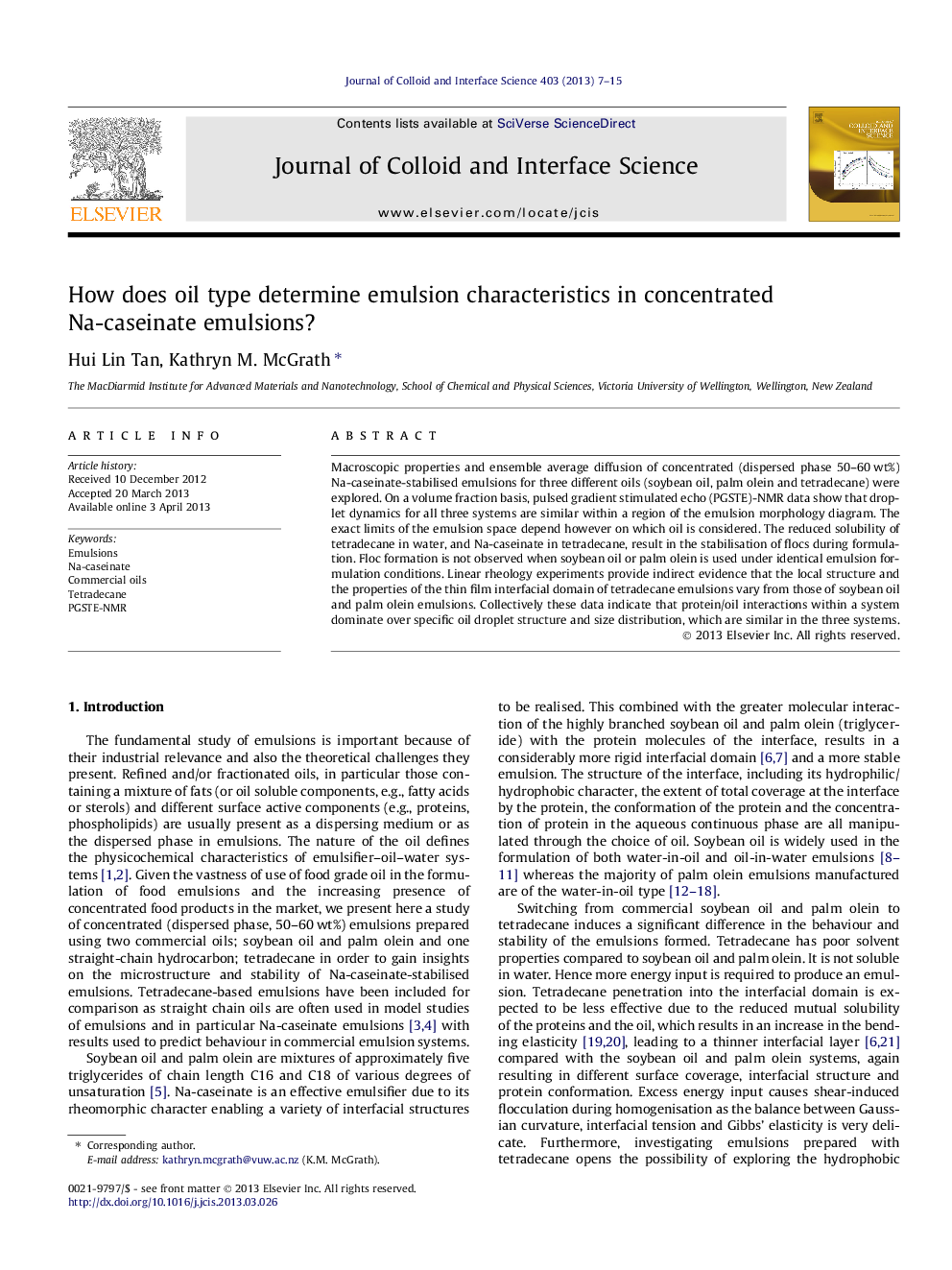| کد مقاله | کد نشریه | سال انتشار | مقاله انگلیسی | نسخه تمام متن |
|---|---|---|---|---|
| 607677 | 1454592 | 2013 | 9 صفحه PDF | دانلود رایگان |

• PGSTE-NMR used to detect transitions between bridging flocculation and protein surface coverage.
• Variation in oil penetration controls emulsion structure and rheological properties.
• Interfacial protein self-assembly can be straightforwardly modified through choice of oil.
Macroscopic properties and ensemble average diffusion of concentrated (dispersed phase 50–60 wt%) Na-caseinate-stabilised emulsions for three different oils (soybean oil, palm olein and tetradecane) were explored. On a volume fraction basis, pulsed gradient stimulated echo (PGSTE)-NMR data show that droplet dynamics for all three systems are similar within a region of the emulsion morphology diagram. The exact limits of the emulsion space depend however on which oil is considered. The reduced solubility of tetradecane in water, and Na-caseinate in tetradecane, result in the stabilisation of flocs during formulation. Floc formation is not observed when soybean oil or palm olein is used under identical emulsion formulation conditions. Linear rheology experiments provide indirect evidence that the local structure and the properties of the thin film interfacial domain of tetradecane emulsions vary from those of soybean oil and palm olein emulsions. Collectively these data indicate that protein/oil interactions within a system dominate over specific oil droplet structure and size distribution, which are similar in the three systems.
Figure optionsDownload high-quality image (109 K)Download as PowerPoint slide
Journal: Journal of Colloid and Interface Science - Volume 403, 1 August 2013, Pages 7–15